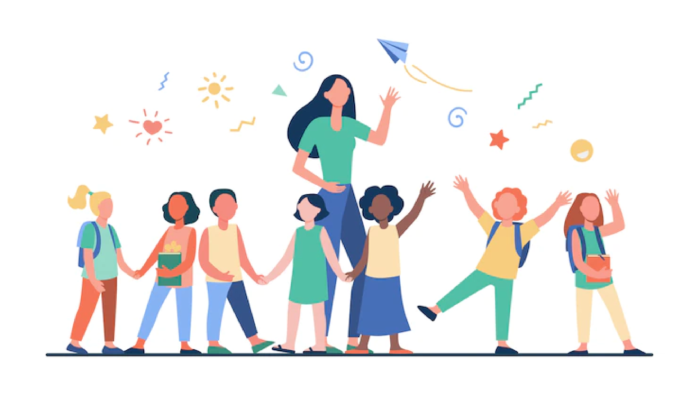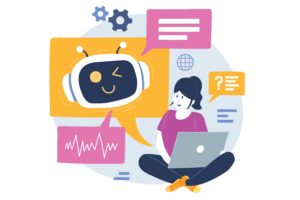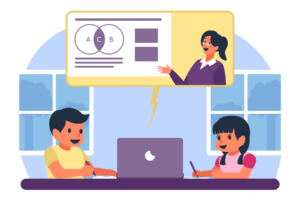How to Engage Different Types of Learners in Your Class

A classroom is a mix of different personalities. Each student has a unique learning style. How can a one teacher cater to the diverse spectrum of learning needs to ensure every student gains complete understanding of the lesson?
At TeachPro+, the month of April is dedicated to the theme of Joy on Learning. Therefore, in this blog post we want to extrapolate how a teacher can meet the individual learning requirements of each of their student. Our traditional educational system favours a few types of learners better than the others. However, our motto is to empower teachers to impart equitable education to all learners.
In this article, you’ll see a categorisation of different types of learners accompanied by different teaching tools and styles that’s suitable to each group. There are majorly 4 types of learners according to the popular VARK Modalities theory:
- Visual (V)
- Auditory (A)
- Read/Write (R)
- Kinesthetic (K)
In addition to that, we’ll cover two other types — Logical/Mathematical and Social/Interpersonal Learners.
Remember, while the categories here seem distinct, they are not exclusive. On an average, every child exhibits a combination of two to three learning preferences.
So, let’s dive right in.
1. Visual Learners
Visual learning style, also known as, special learning, are those that see and observe things and absorb information better through pictures, diagrams, charts, maps etc. They respond better to colours, shapes and other visual elements, therefore, be sure to give them more time to understand the information presented to them.
How to engage Visual learners
- Allowing them to doodle or draw lesson concepts on whiteboard/smartboard
- Give them visual instructions
- Seating them in the front benches
- Use presentations that are visually appealing and have colour codes and cues
- Using infographics with logical structuring of information
2. Auditory Learners
Are there students in your class that respond better to your oral lesson explanations? They are the auditory learners of your class. They don’t hesitant to speak up or read out loud when asked to.
Auditory learners learn better through sound or listening. They prefer to listen to lectures, and often read out loud to themselves. Teachers can explain the lessons, solutions and examples etc. which is easily and quickly grasped by these type of learners. They also have a high aptitude for understanding musical notes and verbal speeches.
How to engage Auditory learners
- Read our loud the text on the screen or make students do that
- Enhance your oral lesson delivery techniques
- Voice modulations and tone alterations to suit the subject matter
- Record lessons for revisions and practice
- Conduct presentations for students
- Sharing content in the format of podcasts and videos
3. Kinesthetic Learners
Kinesthetic learners, also called as tactile learners, prefer to learn by doing things. They are highly energetic and like to experience things either through acting or role play, or touching and handling of things to understand the concepts clearly. These action-oriented learners are great at activities such as sports and dance. These type of learners find it difficult to sit still.
How to engage Kinesthetic learners
- Use of props and models to explain concepts
- Plan for activities that involve movement in class
- Enactment of scenes from lessons
- Facilitate earning through games
- Create or curate plenty of exercises that reinforce the lessons
- Encouraging them to keep their surroundings decluttered facilitating focus
4. Read/Write Learners
Learners that learn better from written words. They look writing and reading articles and books. As most of our books, both physical and digital comprise written words, these learners naturally tend to do better in traditional educational systems. These learners have a natural tendency to write well which is a highly sought after skill for employment. These types of learners usually do well with essays, reports and assignments. They are enthusiastic about looking up and learning new words from the dictionary, remembering and using quotations and so on.
How to engage Read/Write learners
- Create assignments or opportunities for expressing ideas in writing
- Create assignments that involve extensive reading comprehension
- Tasks or activities that entail research using internet, reports etc.
- Offer platform to help them develop their storytelling prowess
- Create word games relevant to the subject matter
While these are the 4 major categories, there are a few others modalities that are also present in learners in varying degrees. Here are the bonus two types!
5. Logical or Mathematical Learners
These are learners that are good with numbers, classification and pattern recognition. They are naturally high performers in Mathematics, Science and Engineering disciplines and seek employment in these sectors.
How to engage Logical/Mathematical learners
- Include stats and numbers in your explanation and lesson planning
- Have a system or a structure for lesson delivery
- Create assignments that involve reading of reports and analysis
- Assign them with challenging and analytical problems to solve
6. Social and Interpersonal Learners
As the name suggests, social and interpersonal learners are those that show an inclination towards collaborations and groups. While not all of them, but a significant number of these learners are extroverted and have good communication skills. Majority of learners from this group demonstrate qualities of sensitivity and empathy.
How to engage Social/Interpersonal learners
- Facilitate collaborations over Math and Science problems
- Working as a class in roleplaying, presentations and other such activities
- Group projects and assignments
As mentioned above, human beings don’t demonstrate any one of the above learning preferences. In fact, they show a combination of a few. That actually makes the job of a teacher easier as they can safely assume every class approximately has equal numbers of learners from each category, and plan lessons and activities evenly.
TeachPro+ is a community portal dedicated to the growth and development of teachers. We have recently launched our Teachers’ program called iTeach 101 which an increasing number of professional educators, trainers and coaches are benefiting from. If you’re interested to know more about it, you can check it out here.
We at TeachPro+ believe strongly in empowering the teaching and learning community with impactful resources, tools and techniques. Every week, we write about one such area that will be beneficial to the industry we serve. Please subscribe to our blog to be alerted as soon as we post on this blog.
You may also like




